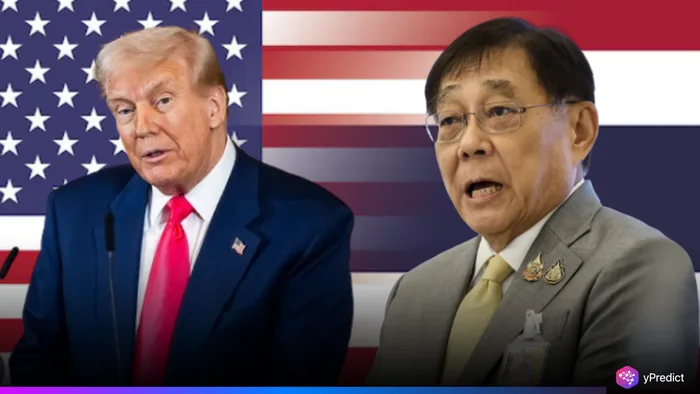
Thailand has increased its trade offers to the United States, offering to eliminate tariffs on 90 percent of American goods, a significant increase from its previous offer of around 60 percent. Last month, former U.S. President Donald Trump intensified the pressure on Thailand by warning that unless U.S. goods have better access to foreign markets, he would impose retaliatory duties.
A business group in Thailand, advising the government, said in a statement that the new offer is meant to reduce frustrations and avoid trade penalties. The timing of the expanded tariff offer shows that Thailand feels it is urgent to protect its exports and maintain goodwill in Washington. The expanded tariff relief package could dramatically reshape trade relations between the two countries.
Why Thailand Is Rushing to Avoid Trump’s Trade Threat
The threat of additional tariffs when a second Trump-era begins is always at risk. Trump was heavily focused on tariffs as a method to renegotiate trade relations. The US and Thailand currently have a large trade surplus in which Thailand exports to the US more than imports. Therefore, Thailand has a vulnerability.
Bangkok is proactively offering deeper tariff reductions on US imports. The aim is to stay off of Trump’s “target” list and avoid tariffs while demonstrating goodwill to US negotiators and keeping US goods on the export list. US access is important for Thai exporters, including electronics, auto parts, and agriculture.
What the 90% Tariff Cut Means for US Exports
If Thailand does move ahead with reducing tariffs on 90% of all US goods, American exporters would gain tremendous benefits with products such as machinery, medical equipment, food, and consumer electronics being more competitive in the Thai markets.
US farmers and manufacturers could also benefit from increased access to Thailand, many of which have been looking to improve trading opportunities in Southeast Asia. This may also encourage even more US companies to consider exporting to Thailand, with an eye towards increasing bilateral trading flows.
Thai Negotiators Act on Urgent Advisory
The Thai business advisory group working with trade negotiators has warned of serious consequences if the tariff offer remains low. Their report suggested that Trump’s pressure could translate into punitive tariffs if Thailand failed to respond.
By increasing the tariff coverage to 90%, Thai officials hope to show strategic alignment with Washington’s goals. The group believes that a generous tariff policy not only protects Thailand’s exports but also enhances its geopolitical standing in the Indo-Pacific.
Political and Economic Stakes Behind the Tariff Shift
The stakes are much higher than commerce. With Trump eyeing another presidential run, Thailand is going to have to brace itself for changing US policy that may take back the work done during the Biden Administration. This most recent tariff revision seems to be Thailand’s way of trying to hedge its future.
At the same time, this move is coming as Thailand is trying to take a larger role in global supply chains and enhance its importance in higher value sectors of the economy, such as clean energy, semiconductors and health care. To extend tariff concessions to US goods, Bangkok signaled its willingness to cooperate on an economic basis.
Could Other Nations Follow Thailand’s Strategy?
Thailand’s 90% offer could set a new precedent for smaller economies looking to manage US pressure. Countries like Vietnam and Indonesia may take note, especially if Trump returns to office and reimposes aggressive trade rules.
The approach shows how proactive economic diplomacy can help prevent escalations. For now, Thailand’s gesture may keep US trade threats at bay while boosting investor confidence. But the global trade environment remains volatile, and future negotiations will likely involve even tougher demands.







